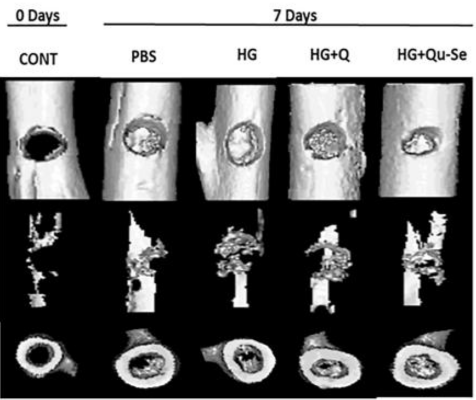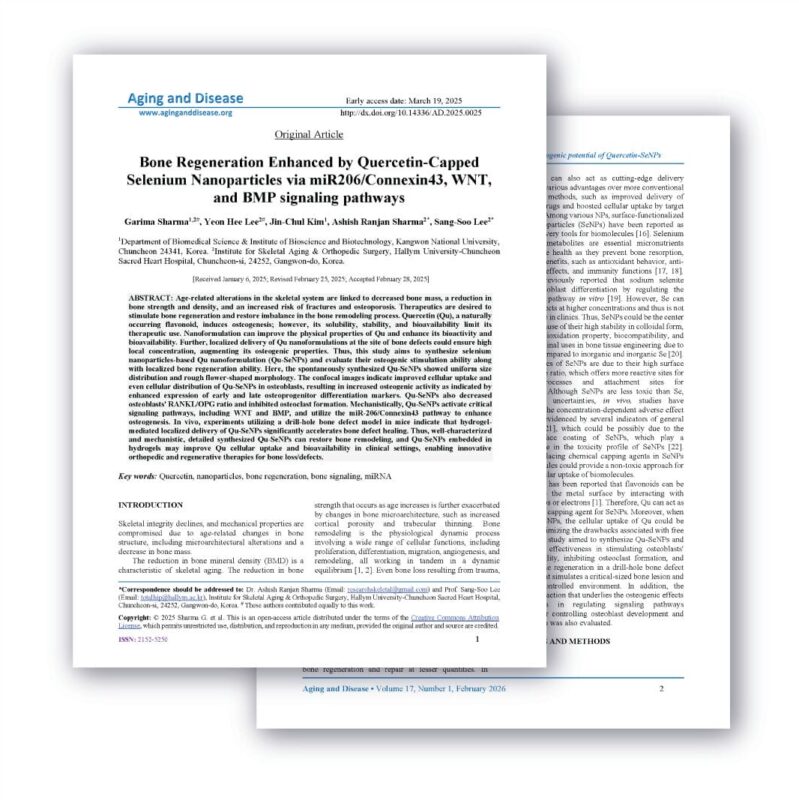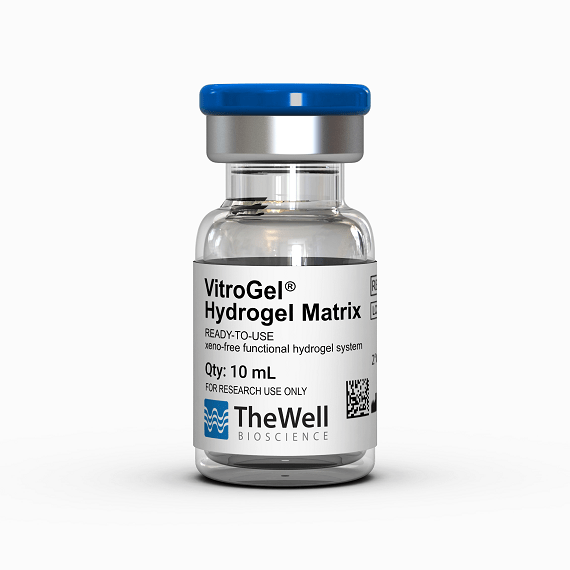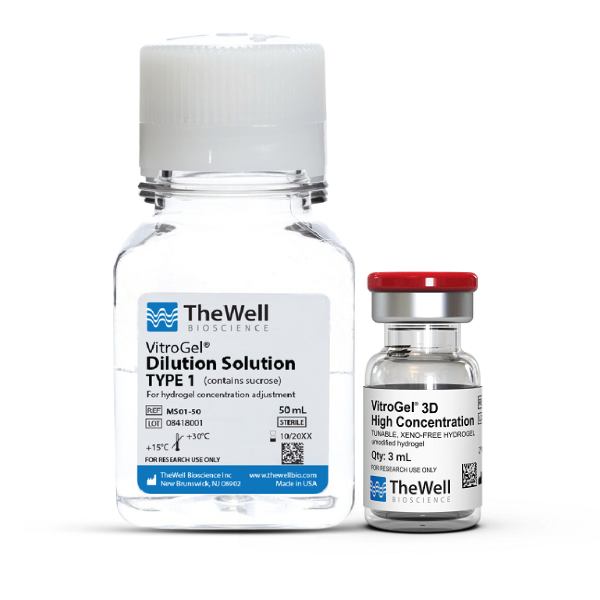Research Highlights
Advancing Bone Regeneration with Xeno-free VitroGel® System

VitroGel® Hydrogel Matrix enables the controlled delivery of bioactive Qu-SeNPs, accelerating bone defect healing and enhancing therapeutic potential for regenerative medicine.
Category:
Injectable / In vivo
Subcategory/cell type:
Cell Therapy / Tissue repair
Team:
Garima Sharma, Yeon Hee Lee, Jin-Chul Kim, Ashish Ranjan Sharma, Sang-Soo Lee
Institutions:
- Department of Biomedical Science & Institute of Bioscience and Biotechnology, Kangwon National University,Korea.
- Institute for Skeletal Aging & Orthopedic Surgery, Hallym University-Chuncheon
- Sacred Heart Hospital, Gangwon-do, Korea.
Hydrogel:
VitroGel® Hydrogel Matrix (Cat. No: VHM01)
The development of biomimetic hydrogels has significantly advanced the field of regenerative medicine by providing an extracellular matrix-like environment that supports cell survival and function. In bone tissue engineering, hydrogels play a vital role in facilitating cell attachment, proliferation, and differentiation, leading to effective tissue regeneration. In this publication , VitroGel® Hydrogel Matrix, a xeno-free hydrogel system was used to study bone regeneration in a mouse model.
In vivo, experiments utilizing a drill-hole bone defect model in mice indicate that hydrogel-mediated localized delivery of Qu-SeNPs (Quercetin-functionalized selenium nanoparticles ) significantly accelerates bone defect healing.

This hydrogel-based system provides an optimal three-dimensional scaffold that supports cell adhesion, proliferation, and differentiation, crucial for effective tissue regeneration. Its xenofree composition ensures high biocompatibility and minimizes immune responses, making it suitable for translational applications. Additionally, VitroGel® facilitates the integration of bioactive molecules, such as these functionalized nanoparticles, allowing for controlled delivery and sustained therapeutic effects. Qu-SeNPs embedded in hydrogels may improve Qu cellular uptake and bioavailability in clinical settings, enabling innovative orthopedic and regenerative therapies for bone loss/defects.
The use of VitroGel® in bone regeneration models underscores its potential as an advanced hydrogel platform for tissue engineering applications. Its ability to provide a controlled microenvironment and integrate bioactive molecules makes it a valuable tool for enhancing preclinical models.





